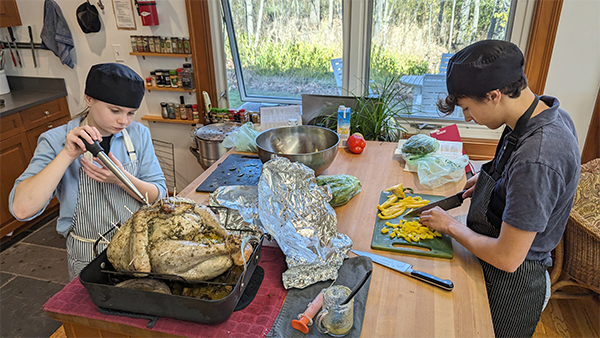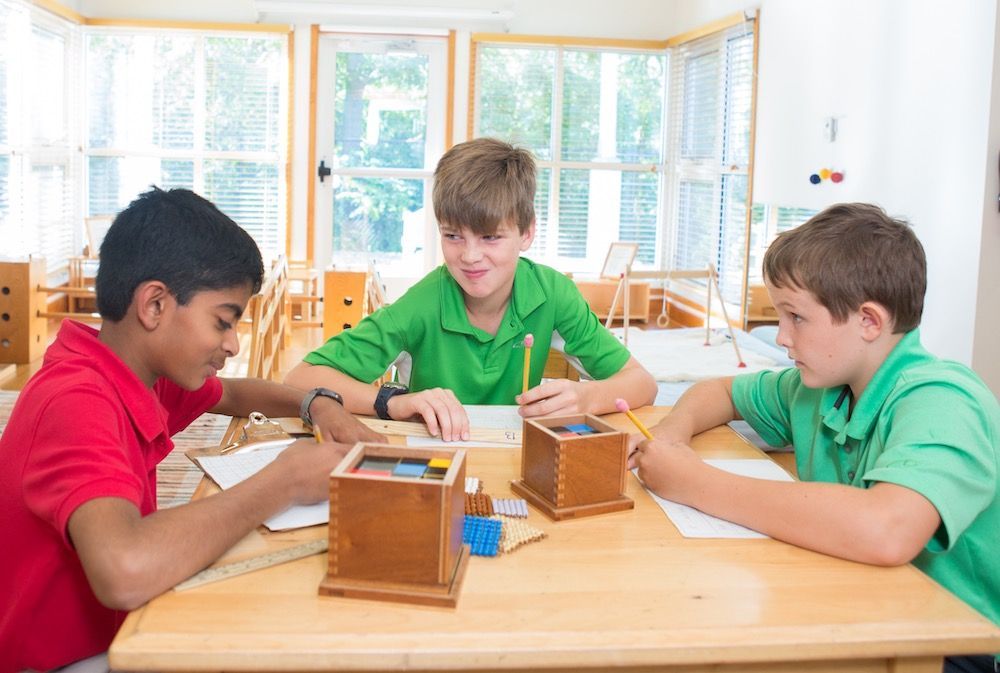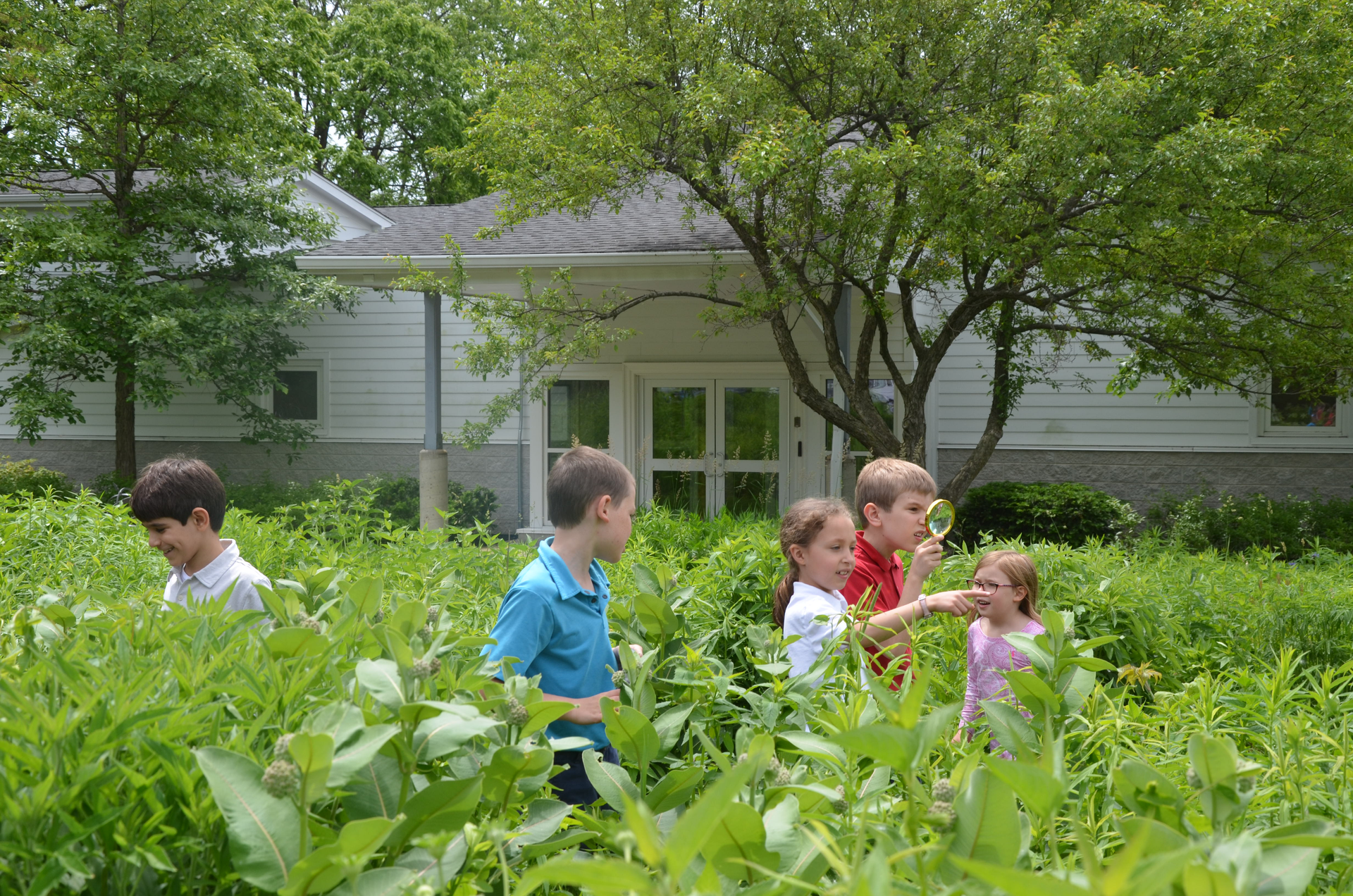
The Third Plane of Development: 12-18 Years
The First Three Years of the Third Plane: 12-15 years
Major changes take place as children turn twelve and enter adolescence. Aside from the obvious physical changes of puberty, young teenagers are emotionally volatile, vulnerable, and sensitive to criticism. They are young adults now and want to be contributing members of their society. This is a delicate time, as they are not truly children anymore, but they are also definitely not fully functioning adults. As parents and teachers seek to “follow the child” at this age, they need to find the balance of providing leadership and boundaries, while also giving teenagers the responsibilities and independence that they can handle as they begin their journey into adulthood.
One of our Secondary Level Teachers captures this balance: “They are still children in some ways, but they aren’t the same as when they were nine, ten, or eleven. Our job is to guide them to adulthood.” The adolescent is a young adult, and needs to be treated as such, with emphasis on both “young” and “adult.” These years are the bridge from childhood to adulthood. Teachers, parents, and mentors are the guides.
So, what do we need to do to follow the child in adolescence? The formula is the same as it always has been: Provide boundaries, cultivate their independence, observe what they truly need, and encourage their interests.
The boundaries that you set at this age are founded in your family’s values, the rules of the communities they are a part of, and the laws and ethics of their society. These are the expectations you will come back to when they inevitably transgress. “Your teenager will shock you,” our Secondary Level Teacher reminds us. “You have to be prepared. Do not overreact. Remove judgment. Elicit their thought process first and let them explain what they were thinking.” Unlike the elementary child, you are no longer introducing them to the concept of morality, or the existence of your family’s values. Now, they need to consistently be a dynamic part of those conversations—Not because they get to determine what those values are, but because they are older now. Wiser. And are capable of more deeply engaging in a conversation about why a value is in place and how their actions have violated it.
Your job is not to change the value or soften the boundary as a result of the discussion. It is to understand what motivated them to break the rule, and use that as a starting point for a conversation so that they better understand their role in your family and society at large, and why living a value driven life matters. You can, to some extent, head these challenges off by looking ahead and bringing these matters up with your child—What to do in dicey situations, what to say during certain kinds of conversations, what not to do. But trust that your child will make many mistakes at this age—some of them will be mistakes that you have explicitly discussed! This is a normal part of their development. An important part of this time in their lives involves fully integrating values into their lives, and there are many social, emotional, physical, and physiological obstacles they need to work through as they do that, with you as a guide.
Along with being firm and clear in your values, following the adolescent also means honoring your child’s entrance into a new chapter in their lives. They are ready for real work, real responsibilities, and a real voice in how that work and those responsibilities are performed. One of our Secondary Level teachers shares, “We let their voices be a part of classroom decisions, within the areas where they can have control. Our role as adults is to prepare the environment and set expectations, but there is a lot they can make their own choices about. For example, our expectation is that the classroom needs to get the jobs done every day, but they have freedom in how we decide to do the jobs.”
This kind of buy-in gives them a sense of ownership, and they are a part of the conversations that assess how the job systems (e.g.) are going. They evaluate the functioning of the systems they had a part in creating, and they live with the consequences. Then they are a part of the solution when they need to make changes. All of this responsibility supports their maturing independence and sense of self.
Adolescents are so capable, and—even if they initially resist being given more responsibility!—take a deep sense of pride in contributing to their family and community. Our other teacher shares, “At this age, we work alongside them, and give them work that we know they are ready for based on their maturity and the responsibility they are demonstrating. We constantly challenge ourselves to give them more than we think they can handle, and let them rise to the occasion.”
At this age, they are ready to work alongside adults, rather than having adults do work for them. It is meaningful for them to feel as though they are able to contribute in the same way that teachers and parents are contributing. And to that same end, we, as adults, need to recognize their competence, and let them “rise to the occasion” so they can feel the fulfillment and dignity that accompanies a job well done.
At home, following the child in this way will take different forms, depending on the activities and structure of your family. They can take complete control of a dinner meal (within the boundaries of the nutritional expectations you provide), they can plan an outing to the city (within the boundaries of the budget and time you allot), they can book their own orthodontist appointments, and they can research locations for a family vacation. There is so much they can do.
In that same vein, they can find ways of pursuing and exploring their own interests and intellectual curiosities. Whereas before, they may have needed more guidance in finding resources and activities in their areas of interest, now (with your oversight and frequent check-ins), they can find trusted experts, local classes, and access to information and experiences in areas that interest them.
Finally, as with all the years before, you will follow your adolescent by observing them closely for what they are telling you with their behavior, actions, and words, and for what they need. In this new stage of development, they speak a different language—one that you will need to listen closely to and learn. And, despite their size, competence, and desire for independence, they need you just as much now as ever, to guide them, to love them, and to let them grow.
The Second Three Years of the Third Plane: 15–18 years
Children graduate from our school at age 14, and this is where our in-depth discussion of following the child ends. High school encapsulates the remainder of the third plane of development, where teenagers become increasingly independent and increasingly competent in the management of their own lives. That being said, before the age of 18, they still depend on their parents for fundamental needs, and it is still important for parents to maintain important limits for social behavior, safety, family requirements, and expectations. Parents also are still needed for wisdom and expertise, as they possess those decades of experience in this world that give them perspective and knowledge about the future that a teenager simply cannot comprehend. Following the child during these years is a continuation of the first three—providing boundaries, encouraging interests, observing what children/teenagers are saying with their behavior, and inviting them to do real work to take care of their lives and their home.
The Fourth Plane of Development: 18-24 Years
Once your child is eighteen, they enter the fourth plane of development. They are now truly adults, and the law—for the most part—recognizes them as such. Many will move away from home for much of the year to attend college, where they provide for themselves in a practical manner, planning meals, scheduling doctors appointments, choosing courses and majors, and managing their lives without even the possibility of oversight from parents
who may live in another city. They are resilient, capable, and have a sense of their place in the world. They have an abundance of independence and the potential to handle it.
At this point, following the child is best done from backstage, but a parent’s job is not over. Modern brain research tells us that the brain is not finished maturing until age 25. This means that your child still has 6–7 more years where they are operating with a still developing brain, and can benefit from your guidance and wisdom. At this age, there are only so many things a parent actually has control over and can set real boundaries for, but parents should be prepared and available to lend their love and perspective to them. If you have been able to cultivate a relationship of trust with your children over the past eighteen years, you can hope that they will turn to you. They also will make use of other trusted mentors and adults in their lives for that same kind of sagacity when they are faced with decisions and challenges. These are fulfilling and fruitful years to witness as your child becomes a full adult in the world.
Final Thoughts
Our school’s co-founder Paula Polk Lillard reminds us that a true leader is a servant. As leaders for our children, we are, in fact, their servants. However, we are not there to serve their whims and impulses. We are there to serve their true needs. And these needs can only be revealed by observing them carefully and closely. She tells a story of coming into a classroom with a young child who had been having behavioral issues in the past year. When I asked what she did to help that girl, she said, “First, I just observed her. For about a month, I made sure she wasn’t affecting anyone else’s classroom experience, but my priority was observing her and understanding why she was having issues. Only then could I know what it was she needed in order to choose productive behavior in school.”
This is a woman with decades of experience with children. But, faced with a new challenge, she did not make assumptions or bring her own agenda to their interaction. She did not give this child free rein in the class. She knew that her first step would be to “follow the child”—not by giving this child permission and freedom, but by observing her and providing the specific boundaries, guidance, and support that this specific young person needed.
We can be reminded of this when we interact with our own children and consider what Dr. Montessori meant by her call to follow the child. We can remind ourselves of our goal for our children—to develop their inherent gifts and to become a person within a community of persons. And then we can utilize this lesson, over and over again, as our children grow: Provide boundaries to give them security and confidence, observe them closely for their needs and interests, and then encourage them in their journey towards independence and a life of generosity, meaning, and fulfillment.


